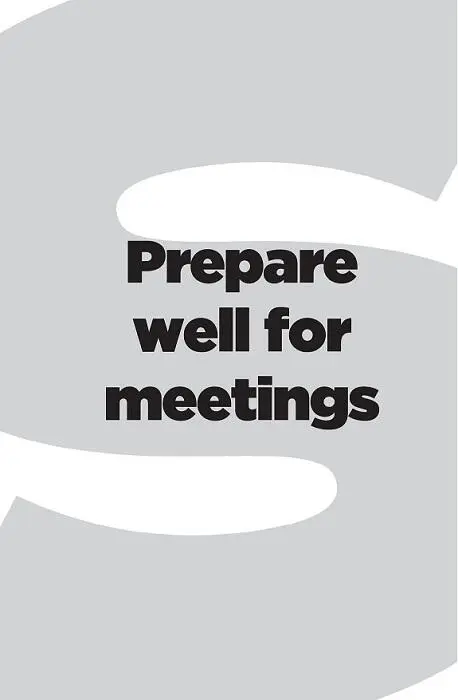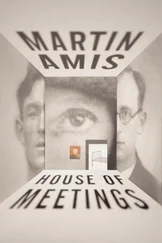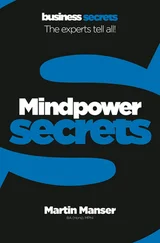Martin Manser - Meetings
Здесь есть возможность читать онлайн «Martin Manser - Meetings» — ознакомительный отрывок электронной книги совершенно бесплатно, а после прочтения отрывка купить полную версию. В некоторых случаях можно слушать аудио, скачать через торрент в формате fb2 и присутствует краткое содержание. Жанр: unrecognised, на английском языке. Описание произведения, (предисловие) а так же отзывы посетителей доступны на портале библиотеки ЛибКат.
- Название:Meetings
- Автор:
- Жанр:
- Год:неизвестен
- ISBN:нет данных
- Рейтинг книги:4 / 5. Голосов: 1
-
Избранное:Добавить в избранное
- Отзывы:
-
Ваша оценка:
- 80
- 1
- 2
- 3
- 4
- 5
Meetings: краткое содержание, описание и аннотация
Предлагаем к чтению аннотацию, описание, краткое содержание или предисловие (зависит от того, что написал сам автор книги «Meetings»). Если вы не нашли необходимую информацию о книге — напишите в комментариях, мы постараемся отыскать её.
Meetings — читать онлайн ознакомительный отрывок
Ниже представлен текст книги, разбитый по страницам. Система сохранения места последней прочитанной страницы, позволяет с удобством читать онлайн бесплатно книгу «Meetings», без необходимости каждый раз заново искать на чём Вы остановились. Поставьте закладку, и сможете в любой момент перейти на страницу, на которой закончили чтение.
Интервал:
Закладка:
one minute wonder You should support a decision that has been agreed, even if you don’t agree with it.
The significance of this is that time can be wasted and roles confused unless it is clear who it is that actually makes the decision.
You should also consider how decisions are made in your company or organization:
▪ Are decisions made by the leader? This can often be quick and efficient but could be considered harsh as colleagues may not have been involved and may not feel valued as their views are not sought.
▪ Are decisions made by a majority? This can be considered fair but the minority may be reluctant to put the decision into action.
▪ Are decisions made by general agreement (consensus)? This has the disadvantage that it may take a long time to win over each colleague but it has the advantage that colleagues will feel committed to putting them into action as they have been part of the decision-making process.
It is important to be clear about who makes the decision. If you are not clear on this, roles may become confused and time will be wasted.
1.5
Know the different roles
It is important to know the different roles that need to be fulfilled to make sure that a meeting runs smoothly.
The key roles in a meeting are:
▪ The chair, who works with other colleagues to help prepare the agenda, welcomes newcomers, builds good relationships with participants, keeps the meeting on track and reviews progress, stimulates discussion, summarizes and then makes decisions. This role is important and we devote a whole section to this: see here.
▪ The coordinator/secretary, who plans the venue and time, invites the relevant participants, agrees the agenda with the chair, sends out the agenda and any papers and reports before the meeting, prepares the room for the meeting and makes arrangements for refreshments, etc.
▪ The minute-taker, who will work with the chair to ensure that a full statement of what is agreed at the meeting is recorded. The minute-taker will not write down every word, just significant matters, and will write up the minutes as soon as possible after the meeting, check with the chair that they accurately reflect the content of the meeting and send out the minutes as soon as possible after the meeting. Again this role is crucial and we devote a whole section to this: see here.
▪ Every participant has a role to play in the meeting by preparing themselves and reading the material in advance of the meeting and listening well and responding positively. If you leave a meeting thinking that it was a waste of time, then you are partly responsible: each person has a role to play.
When you are next in a meeting in which you do not feel involved, think of what you can do positively to move the meeting on … and do it.
Whatever your role – chair, coordinator/secretary, minute-taker or participant – each person has an important role to play to make sure that the meeting is successful.

How many meetings have you been to where things have gone wrong? Has a room where you’d planned to hold the meeting been double-booked? Have you ever arrived at a venue and no one is expecting you? Have you ever arrived at the wrong time? Or if you are in the meeting, and the seating is poorly laid out, the relevant people are not present; there is no agenda, and papers and reports have not been circulated before the meeting … Unfortunately, the list could go on and on. In this chapter we consider how to prepare well for meetings to make sure that they are successful and effective.
2.1
Make the practical arrangements
Preparation for a meeting is vital. What is the best time of day to hold it? For example, if you hold the meeting just before lunch then colleagues will want to finish punctually. If you hold it just after lunch they may be sleepy. Think what is the best time.
You also need to consider the venue:
▪ If you are holding a conference, will you need several rooms, e.g. one formal room to conduct the official business and a separate room for refreshments? Will you need rooms for breakouts, small discussion groups? Book the rooms you need as soon as possible.
▪ If you’re considering an external venue, e.g. a hotel, then choose one that is easily accessible to most of your participants. Arrange an appointment with the on-site conference manager to discuss your requirements and their facilities and prices. If the venue is away from your offices, then check car parking and access to public transport.
▪ If you are having an appraisal or are discussing a sensitive matter, then consider meeting at a neutral venue. Try to arrange the seating so that you sit at right angles to the person you are speaking to. Further, the chair you are sitting on should be at the same level as the person you are speaking to.
Also list the basics:
▪ How many participants are attending.
▪ How you want the seating to be laid out in the room. Examples: horseshoe (U-shaped) seating, if you want all participants to have good eye contact with one another; boardroom-style seating where participants sit around a long table; conference- or theatre-style seating in which speakers sit in a row in front of the audience; cabaret/restaurant-style seating for more informal occasions.
▪ Whether refreshments are needed and if so when and what; don’t forget special dietary requirements.
▪ The lighting and air-conditioning/heating of the room.
▪ Wi-Fi availability (e.g. password for access to the Internet).
▪ Other equipment that you will require.
▪ Facilities for those hard of hearing and/or with special access requirements.
▪ Accessibility to toilets.
case study Jane and Kate needed some quiet time to think through their strategy for a forthcoming project so they booked room A3 in their offices from 9.30 a.m. Unfortunately, they had only booked that room for an hour, so at 10.30 a.m., just as they were making good progress, some other colleagues interrupted them saying they had booked the room from 10.30 a.m. The lesson: check your arrangements.
These lists may seem unimportant but you only have to forget one detail to realize that working through a check list is essential.
2.2
Invite the relevant people
Have you ever been at a meeting where you all look at each other and realize that the person who is most needed at the meeting isn’t present? You need to take care over inviting the relevant participants to attend the meeting.
To invite participants:
▪ Check their availability on your computer system or contact them by phone or email to see if they’re available. If the meeting is a regular one, for example of a subcommittee, then there will be little choice over who to invite. However, if the meeting is taking place only on that occasion, then you need to take certain steps. Begin by checking that the most important person/people can attend. Confirm their availability in an email so there is no doubt later. If you want people to attend only the part of a meeting that is relevant to them, then make that clear.
▪ Invite those participants who need to attend. Some people suggest that you should invite many people on the basis of not wanting to offend those who are not invited. However, if you have too many participants, then the discussion is likely to last a long time and it will be difficult to reach decisions. (On the other hand, if you invite too few people, then those who are present may complain that other people’s interests are not being heard and so consider that the meeting lacks authority.)
Читать дальшеИнтервал:
Закладка:
Похожие книги на «Meetings»
Представляем Вашему вниманию похожие книги на «Meetings» списком для выбора. Мы отобрали схожую по названию и смыслу литературу в надежде предоставить читателям больше вариантов отыскать новые, интересные, ещё непрочитанные произведения.
Обсуждение, отзывы о книге «Meetings» и просто собственные мнения читателей. Оставьте ваши комментарии, напишите, что Вы думаете о произведении, его смысле или главных героях. Укажите что конкретно понравилось, а что нет, и почему Вы так считаете.












